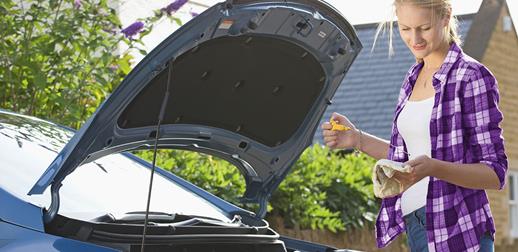
A dirty, unreadable number plate, worn tyres or even a lack of windscreen washer fluid are among reasons many cars fail their annual MOT.
Testing data from the Driver and Vehicle Standards agency (DVSA) shows that around 40% of cars fail their MOT at the first attempt.
Failure to have a valid MOT means your car is illegal to drive and your car insurance will be invalidated. And an MOT can help reveal potential problems that could affect the safety of your car further down the line.
Easy fixes
With a bit of preparation many MOT failures – and the subsequent hassle and extra expense – can be prevented.
In fact, the DVSA says that nearly 50% of all faults found on this annual roadworthiness check could be avoided by carrying out regular, simple maintenance, like replacing bulbs, wipers and tyres.
Tougher tests
Taking time to prepare your car for its annual check-up has become even more important since 20 May 2018. That’s when stricter tests were introduced.
Along with tougher emissions tests for diesel cars, faults identified on cars will be classed as Minor, Major or Dangerous. It is hoped this will make it easier for motorists to see what parts of their car need extra TLC. Major and Dangerous issues will result in an automatic failure, and you be will be advised not to drive your car away. Minor defects won’t stop your car from passing, but faults will be recorded on the MoT certificate and online MoT record, just as advisories are today.
Booking your MOT
Your car must pass its MOT once a year, meaning at least 45-60 minutes at an authorised testing centre. New cars are allowed on the road for three years (four in Northern Ireland) before they need their first MOT.
Test centres are particularly busy in March and September, the two months when new cars are registered. If your car's MOT is due to expire in March, it may be wise to book a test early. In March 2015, a whopping 492,774 new car registrations were recorded, the highest since the switch to six-monthly plate changes in 1999.
If you have lost your MOT certificate and aren’t sure when your car is due for its check, it’s simple to find out by using the government-run vehicle enquiry serviceby entering your registration number and vehicle make. You can also sign up for a free text message or email reminder one month before your MOT is due.
Checklist to prepare your car for its MOT
Even if your car is due for an MOT in the coming weeks, you still have time to help increase its chances of passing.
You can check over your car in just a few minutes, using our 11-point checklist:
- Fuel, engine oil and windscreen wash – make sure these are all topped up.
- Horn – check it works and is loud enough to get the attention of other drivers and pedestrians.
- Exhaust – start the engine in a well-ventilated space to check for leaks and listen for any unusual noises or smoke.
- Seats and seatbelts – check all seatbelts fasten securely and are in good condition. You must be able to adjust the driver’s seat.
- Mirrors – give them a quick wipe and ensure they are clearly visible from the driver’s side.
- Brakes – test the handbrake and footbrake to ensure they work properly.
- Tyres – check the pressure and increase it if necessary. Tyres must be the right type and size, with at least the minimum legal tread depth of 1.6mm - try the 20p test.
- Registration plates – don’t fall into the trap of failing because your registration plate isn’t readable or properly attached to your car. And if you have a personalised plate, ensure it follows DVLA rules.
- Lights and indicators – have someone stand outside the car and check they all work properly.
- Windscreen wipers – check they are in good condition, with no tears or holes, and can clean your windscreen properly.
- Windscreen – remove any stickers that block the drivers view and check there are no cracks longer than 1cm.
Don’t wait
Of course, you shouldn’t wait for your MOT to find out if your car needs maintenance.
And remember, an MOT isn’t the same as having your car serviced, as it doesn’t check the engine, clutch or gearbox. A full service is usually recommended every 12,000 miles or every 12 months, whichever comes sooner. But every car is different, so check your owner’s handbook for the manufacturer’s recommended service schedule.

